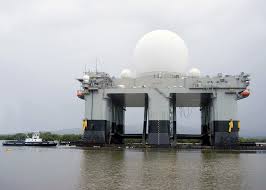
The US Air Defense, through the Missile Defense Agency, has successfully integrated Lockheed Martin’s Long Range Discrimination Radar (LRDR) into its arsenal. This cutting-edge radar system exhibits advanced capabilities in detecting and tracking multiple small objects, including all classes of ballistic missiles, across extensive distances while maintaining continuous operation.
Lockheed Martin, in a press release, disclosed that LRDR, stationed at Clear Space Force Station in Alaska, has attained its final approval stage, the DD250, and has been officially transferred to the Missile Defense Agency. The radar system is currently undergoing preparations for an operational capability decision (OCB) and will soon be handed over to the Warfighter. Even before this transition, LRDR has been actively collecting space domain awareness data for the US Space Force.
Chandra Marshall, Vice President at Lockheed Martin for Radar and Sensor Systems, provided insights into the innovative features of their radar system. She highlighted its unique amalgamation of high-frequency and low-frequency radar advantages, enabling superior target detection, tracking, and differentiation capabilities.
The LRDR program stands as a critical asset in bolstering the defensive measures of the US homeland against potential ballistic missile threats. Forming the cornerstone of the Missile Defense Agency’s multilayered strategy, this program underscores the government’s enduring commitment to futuristic radar technologies, including S-Band and terrestrial radar integration.
Lockheed Martin’s LRDR program is a testament to the comprehensive approach towards national defense, leveraging advanced technologies such as Gallium Nitride (GaN) based solid-state radar. This radar system not only ensures the preservation of land-based interceptors but also enhances the nation’s ability to engage and neutralize threats effectively.
LRDR’s adaptability and versatility are notable, operating within the S-band frequencies and featuring an open system architecture optimized for scalability and threat response without requiring hardware modifications. This adaptability ensures that the system remains effective against evolving threats, contributing significantly to the nation’s defense capabilities.
Integral to defense operations, the Long Range Discrimination Radar (LRDR) serves as a crucial component in the missile defense system. Interfacing with command and control elements, combat management systems, and communication networks, the LRDR plays a pivotal role in defense strategies. Its open systems architecture, exemplified by Lockheed Martin’s recent addition of hypersonic defense support capability, provides real-time insights to decision-makers, enhancing response times during critical scenarios.
The LRDR’s capability to track hypersonic targets is attributed to GaN technology, enabling higher power levels and leveraging the S-band radar for extensive detection and tracking ranges. Seamlessly integrated into the Ballistic Missile Defense System (BMDS), the LRDR furnishes essential data, including target tracking and threat discrimination details, empowering the BMDS to make informed decisions regarding interceptor missile deployment.
Engagement of hypersonic targets demands a multifaceted approach. LRDR detects and tracks the target, transmitting data to the BMDS for interception decision-making. Leveraging LRDR’s precise tracking data, interceptor missiles are deployed strategically to neutralize threats effectively.
In tandem with defense efforts, the United States is actively developing the Glide Breaker hypersonic interceptor missile under the auspices of the Defense Advanced Research Projects Agency (DARPA). Designed to counter hypersonic threats exceeding Mach 5 speeds, Glide Breaker employs a kinetic kill vehicle mechanism, obliterating targets through high-speed impact without reliance on explosives.
Upon detection of a hypersonic threat, Glide Breaker launches and maneuvers towards the target utilizing onboard sensors and guidance systems. The kinetic kill vehicle separates from the missile and collides with the target, annihilating it through sheer force. This hit-to-kill interception method ensures target destruction without explosive elements.
While still in development, Glide Breaker signifies a significant advancement in the United States’ defense capabilities against hypersonic threats. Beyond missile defense, LRDR also contributes to space domain awareness, monitoring earth-orbiting satellites and identifying space debris, reflecting its multifunctional utility in national security endeavors.




